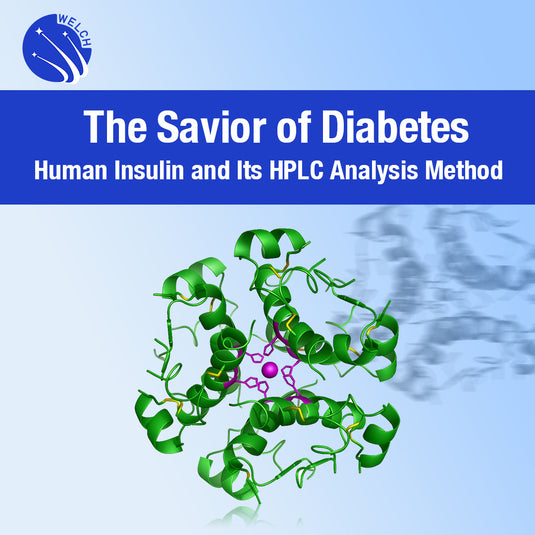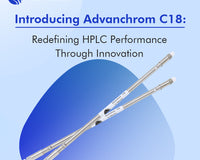Knowledge Base
-
![[Readers Insight] Is Retention Time Determined Solely by the Polarity of a Compound?](//www.welch-us.com/cdn/shop/articles/ret-time-1080-1027_bb36cb58-53c4-4db5-9d37-b70260ede6e8_535x.jpg?v=1765522193)
[Readers Insight] Is Retention Time Determined Solely by the Polarity of a Compound?
Have you ever thought about this question: In reversed-phase chromatography, does an earlier elution always mean the compound has higher polarity? Or rather — is retention time determined solely by the polarity of a compound? In this article, we explore what polarity is, why it acts as the primary factor affecting retention time, and what other factors are unneglectable. -
![[Readers Insight] Mobile Phase Selection in Method Development: How to Optimize](//www.welch-us.com/cdn/shop/articles/mpoptimize-1080-1020_535x.jpg?v=1762394840)
[Readers Insight] Mobile Phase Selection in Method Development: How to Optimize
In method development, the selection of mobile phases is an important part to success. This article discusses thoroughly different mobile phases and their use in HPLC and LC-MS, and provides recommendations for initial mobile phase choices. -

Common Problems in Solid-Phase Extraction: A Practical Troubleshooting Guide
Solid-Phase Extrtaction is a fast, easy and high-performance sample preparation technique widely used, but routine SPE runs can encounter recurring problems. This article summarizes typical causes and practical fixes for each SPE problem. -
![[Readers Insight] Retention Time Drifts: Why Do They Occur?](//www.welch-us.com/cdn/shop/articles/1080-1017-2_535x.jpg?v=1761027048)
[Readers Insight] Retention Time Drifts: Why Do They Occur?
Learn the causes of retention time drift in HPLC analyses, explained thoroughly through mobile phase, column, instrument, and sample solvent. -

Resolving Weak Retention and Multiple Interferences in the HPLC Analysis of Sodium Metabisulfite
This article discusses an HPLC method for accurately determining sodium metabisulfite in complex formulations where common additives such as citric acid, sodium benzoate, and disodium EDTA may cause interference. By using Welch Xtimate Sugar-H column, the method achieves strong retention and effective separation without interferences. -

The Savior of Diabetes: Human Insulin and Its HPLC Analysis Method
This article presents an HPLC case study on the analysis of human insulin using the Welch Xtimate® SEC-120 column, featuring the column’s stable and reliable performance in quantifying human insulin injections. -

A Premier Alkaloid: Nicotine and the Strategy for Developing Its Determination Method
Nicotine analysis is notoriously challenging due to its weak retention on conventional columns. This article shares a practical UHPLC-MS method using the Welch Ultisil HILIC Amphion II column, detailing the development approach, chromatographic conditions, and key advantages for reliable nicotine detection. -
![[Readers Insight] Matrix Effects in Mass Spectrometry: Why They Matter](//www.welch-us.com/cdn/shop/articles/matrix-effect-2-1080-922_b1c87dc5-0653-4cb6-afe0-a6d0f011eced_535x.jpg?v=1759999506)
[Readers Insight] Matrix Effects in Mass Spectrometry: Why They Matter
In this article, we explore further how matrix effects affects recovery results in mass spectrometry analyses by hindering preparation loss, and discuss when it should be corrected by using calibration curves prepared by blank matrices. -

Determination of Mannitol Related Substances with Xtimate Sugar-Ca
Mannitol is a substance with important applications in pharmaceutical and food. See how Welch Xtimate Sugar-Ca columns perform well in determination of mannitol related substances in accordance with Chinese Pharmacopoeia 2025 Edition. -

Column Substitution in HPLC: More Than Just Matching Specs
When considering HPLC column replacements, cross-reference charts can only tell half the story. Read to learn how a right Welch Column goes beyond replacement—delivering optimized results tailored to your method. -
![[Reader Insights] Acidic or Basic? Read Analyte Structure First When Developing a Method](//www.welch-us.com/cdn/shop/articles/acidic-basic0911-1080_6eed96a2-c485-4d8d-bda3-11ab5f2f0026_535x.jpg?v=1765523219)
[Reader Insights] Acidic or Basic? Read Analyte Structure First When Developing a Method
In this article, we discuss how to read molecular structure to assess an analyte’s acidic or basic character and use that insight to design starting chromatographic methods. You will find practical, rule-based criteria, clear decision points for method setup, and a focused real-world example that illustrates structure-driven choices. -

The Four Pillars of Welch Materials ODS Columns
This article explores the fundamental qualities of ODS columns and examines four representative designs from Welch Materials. It reflects on long-standing misconceptions, practical challenges, and design considerations, offering chromatographers deeper insight into one of the most widely used tools in liquid chromatography.






![[Readers Insight] Is Retention Time Determined Solely by the Polarity of a Compound?](http://www.welch-us.com/cdn/shop/articles/ret-time-1080-1027_bb36cb58-53c4-4db5-9d37-b70260ede6e8_535x.jpg?v=1765522193)
![[Readers Insight] Mobile Phase Selection in Method Development: How to Optimize](http://www.welch-us.com/cdn/shop/articles/mpoptimize-1080-1020_535x.jpg?v=1762394840)

![[Readers Insight] Retention Time Drifts: Why Do They Occur?](http://www.welch-us.com/cdn/shop/articles/1080-1017-2_535x.jpg?v=1761027048)



![[Readers Insight] Matrix Effects in Mass Spectrometry: Why They Matter](http://www.welch-us.com/cdn/shop/articles/matrix-effect-2-1080-922_b1c87dc5-0653-4cb6-afe0-a6d0f011eced_535x.jpg?v=1759999506)


![[Reader Insights] Acidic or Basic? Read Analyte Structure First When Developing a Method](http://www.welch-us.com/cdn/shop/articles/acidic-basic0911-1080_6eed96a2-c485-4d8d-bda3-11ab5f2f0026_535x.jpg?v=1765523219)
